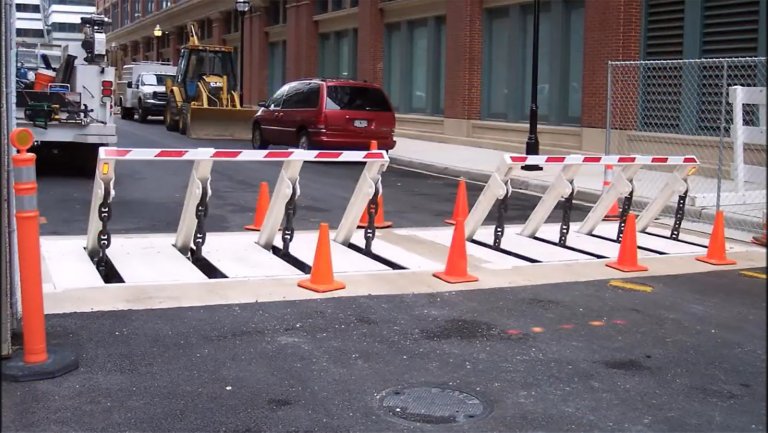More About Wedge Barriers
Table of ContentsA Biased View of Wedge BarriersThe Buzz on Wedge Barriers

An Unbiased View of Wedge Barriers
The remaining force applied to
the cam webcam deploy release wedge plate 16 may might provided supplied an electromechanical actuator 84 or other actuator. The spring setting up 54 and the actuator 84(e. Wedge Barriers. g., electromechanical actuator)might operate with each other to equate the webcam and raise the wedge plate 16.
As mentioned above, the springtime assembly 54 puts in a continuous force on the cam, while the electromechanical actuator may be managed to exert a variable force on the web cam, thereby enabling the lifting and decreasing( i. e., releasing and retracting )of the wedge plate 16. In particular embodiments, the continuous force applied by the spring assembly 54 might be adjustable. g., electromechanical actuator) is impaired. As will be appreciated, the springtime assembly 54 may be covered and secured from particles or other elements by a cover plate(e. g., cover plate 68 revealed in FIG. 4) that may be significantly flush with the raised surface 38 of the foundation 14. As discussed over, in the deployed placement, the wedge plate 16 offers to block accessibility or traveling beyond the barrier 10. The barrier 10(e. g., the wedge plate 16 )may obstruct pedestrians or automobiles from accessing a building or pathway. As gone over over, the barrier 10 is affixed to the support 30 secured within the structure 14,

front brackets 71. Therefore, the affiliation settings up 72 may pivot and revolve to enable the collapse and extension of the link assemblies 72 throughout retraction and deployment of the bather 10. The affiliation assemblies 72 reason activity of the wedge plate 16 to be restricted. As an example, if a lorry is taking a trip in the direction of the released wedge plate 16(e. As an example, in one circumstance, the security go now legs 86 might be extended duringmaintenance of the obstacle 10. When the security legs 86 are released, the security legs 86 sustain the weight of the wedge plate 16 against the surface 12. Therefore, the lifting device 50 may be shut off, serviced, removed, changed, and so forth. FIG. 5 is partial perspective view of a personification of the surface-mounted wedge-style barrier 10, showing the web cam 80 and the web cam surfaces 82 of the training device 50. Especially, two cam surface areas 82, which are referred to as reduced web cam surfaces 83, are positioned listed below the webcam 80. The reduced cam surface areas 83 may be dealt with to the surface area 12 (e. For instance, the lower web cam surfaces 83 and the mounting plate 85 might create a single piece that is protected to the anchor 30 by screws or other mechanical bolts. In addition, 2 webcam surface areas 82, which are described as top web cam surface areas 87, are placed over the web cam 80 and coupled to (e. In various other embodiments, interfering layers or plates may be placed between the surface 12 and the reduced camera surface areas 83 and/or the wedge plate 16 and the upper web cam surface areas 87 As discussed over, the camera
80 translates along the web cam surface areas 82 when the wedge plate 16 is lifted from the withdrawed placement to the deployed setting. Furthermore, as stated over, the spring assembly 54 (see FIG. 3 )might offer a force acting upon the cam 80 in the direction 102 through springtime pole 58, which may lower the pressure the electromechanical actuator home 84 is called for to relate to the web cam 80 in order to activate and lift the wedge plate 16. 1 )to the released placement(see FIG. 4). As revealed, the webcam 80 includes track wheels 104(e. g., rollers), which get in touch with and translate along the web cam surface areas 82 throughout operation.